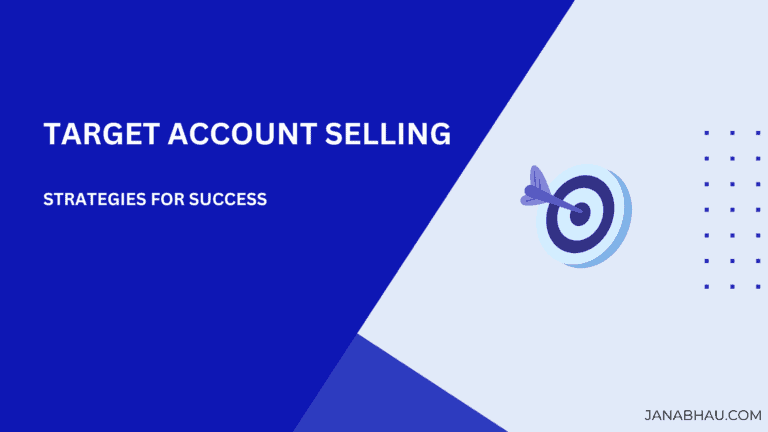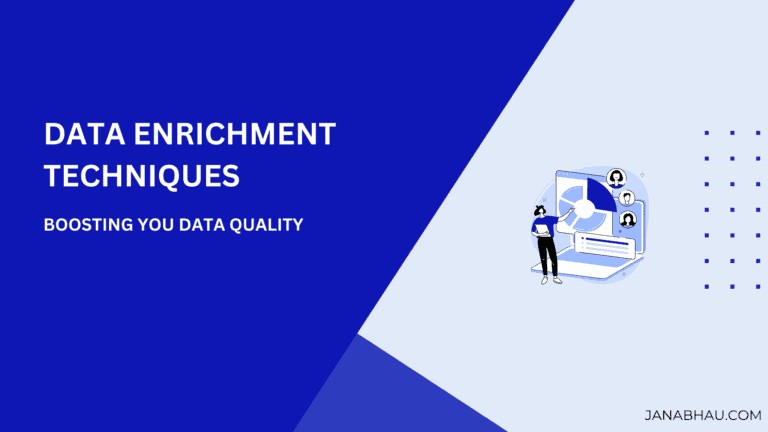7 Game-Changing Data Enrichment Examples to Skyrocket Your Sales in 2024

Ever felt like your sales data was a bit… meh?
You’re not alone. As a sales rep, I know how exhausting it is to waste hours digging for the right data, just to prepare your outreach effectively.
This is where data enrichment can make all the difference. By automatically enhancing your existing data with valuable insights, you can drastically cut down on research time and focus on selling.
In this post, we’ll dive into 7 data enrichment examples to help you save time and accelerate your sales.
Key Takeaways
- Data enrichment techniques significantly improve sales performance, shorten the sales cycle, and improve customer lifetime value.
- The seven data enrichment strategies covered include firmographic, technographic, intent data, social media, predictive lead scoring, geographic, and sentiment analysis – each providing unique insights to tailor sales approaches.
- Implementing data enrichment tools and data cleansing enhance lead data and help you identify your target audience.
1. Firmographic Enrichment: Know Your Prospects Inside Out

Firmographic enrichment transformed my B2B sales approach. It’s about leveraging third-party data to understand the characteristics of prospective companies. This information can help you improve your ideal customer profile and tailor your sales and marketing strategies accordingly.
Think of it as your secret weapon for prospect intelligence!
Key Elements of firmographic data:
- Company Size: Helps determine the right solutions and pricing structures.
- Industry: Provides insights into specific challenges and opportunities within that sector.
- Annual Revenue: Offers a glimpse into budget capabilities and potential deal sizes.
- Location: Aids in understanding regional dynamics and customer preferences.
- Growth Trends: Identifies potential for long-term partnerships and upselling opportunities.
To use firmographic data effectively, you can integrate data enrichment tools into your CRM and sales intelligence tools. This allows for automated segmentation and personalized outreach at scale. Use the data quality from it to prioritize leads, customize value propositions, and identify cross-selling opportunities.
How to use firmographic data?
A powerful application is in account-based marketing campaigns. By targeting companies matching your customer profiles, you can significantly boost conversion rates and deal sizes. There are a lot of third party data providers who can generate firmographic data to enrich lead data.
Success story:
HubSpot excels in using firmographic enrichment to refine its marketing and sales outreach. By understanding the specifics of potential clients—like their size and industry—HubSpot can customize its offerings to better meet their unique needs, ultimately boosting conversion rates.
2. Technographic Enrichment: Uncover Tech Stacks for Targeted Selling

Technographic enrichment provides a detailed view of a prospect’s tech landscape, enabling highly targeted selling strategies. Utilizing enriched data helps sales and marketing teams improve product positioning by talking about integrations, tech compatibility (with an operating system or a mobile device), or scalability.
Key elements of technographic data:
- Software: ERPs, CRMs, industry-specific apps, productivity suites
- Hardware: Servers, network equipment, endpoints, specialized devices
- Platforms: Cloud services, CMSs, e-commerce platforms, development frameworks
Leveraging this info enhances your sales approach. For example, knowing a prospect uses Salesforce lets you highlight your product’s Salesforce integration.
Technographic data helps identify pain points. Spot an outdated system? Position your solution as a modern alternative.
It also uncovers cross-selling opportunities. If you see complementary tech in use, show how your product enhances their stack. For example, if your business offers a sales prospecting tool, you can target businesses that use a lead management software since both these tools deal with different stages of the sales process.
How to use technographic data?
Technographic data is a type of first party data that the sales team can collect during the discovery call itself. It’s extremely helpful in personalizing follow-ups. For example, you wouldn’t focus on integrations in the follow up emails or calls if you know that the business is yet to undergo a digital transformation. In this case, you could focus on improving the efficiency and saving time instead.
66% of B2B marketers collect technographic data to identify competitive opportunities and target accounts who aren’t using their their products or services. This data gives them a better understanding of the total addressable market (TAM), improves marketing campaigns, and boosts sales prospecting as well.
The goal isn’t just knowing what tech they use, but understanding how it impacts their business processes.
Success story:
Spotify is a company that leverages technographic data well. By tracking which devices users listen on, their location, and the time of day they listen, Spotify can create personalized playlists and recommendations based on listening habits and preferences.
3. Intent Data Enrichment: Predict Buyer Behavior and Strike While the Iron’s Hot

Intent data enrichment has been a real eye-opener for me in modern sales. It’s like having a crystal ball that shows you what your prospects are thinking about right now.
So, what exactly is intent data? It’s information that signals a prospect’s interest in products or services like yours. Think of it as digital breadcrumbs they leave behind as they research solutions to their problems.
Key elements of intent data:
- Web searches: What terms are they Googling?
- Content consumption: Which whitepapers or case studies are they downloading?
- Social media activity: Are they engaging with posts about specific pain points?
I remember when I first started using intent data. It felt like I had insider information on every lead! Suddenly, I knew who was actively looking for solutions and what they were interested in.
How to use intent data?
- Set up alerts for high-value intent signals, such as specific search terms or frequent visits to product pages.
- Score leads based on the strength and relevance of their intent. This allows you to focus your efforts on the most promising leads.
- Tailor your communication based on the insights gained from intent data. For example, if a prospect is researching a particular product, customize your pitch to address their specific needs and concerns.
Success story:
Drift (now Salesloft) is a company that effectively used intent data enrichment. They specialize in conversational marketing and use intent data to identify website visitors who are likely to be interested in their product.
By tracking visitors’ online behavior, such as the pages they visit, the content they consume, and the keywords they search for, Drift could determine their level of interest and engage with them in real-time through chatbots or live chat. This helped them convert leads into customers more efficiently.
4. Social Media Data Enrichment: Tap into the Power of Online Presence

Social media data is a goldmine of insights into prospects’ preferences, behaviors, and needs. You can use a data enrichment tool, specific to social media, such as a social listening tool to collect this data. It gives you a lot of insight into ongoing trends, discussions, and the change in customer behavior over time.
You can even use it to monitor your brand’s reputation online.
Key elements of social media data:
- Engagement Metrics: Likes, comments, and shares indicate how actively a prospect interacts with content.
- Content Themes: Topics of interest reveal what prospects are passionate about and prioritize.
- Professional Groups: Membership in LinkedIn associations or Twitter lists highlights their professional network and interests.
- Recent Life Events: Significant milestones, like job changes or promotions, provide personalized outreach opportunities.
- Sentiment Analysis: The overall tone of their online presence reflects their sentiments and attitudes towards industry topics.
How to use social media data?
The goal of enriching data with social media interactions is to understand their influence on buying decisions and pain points.
I’ve developed several techniques to leverage these interactions:
- Use recent posts as conversation starters
- Share tailored content based on their interests
- Time outreach around professional milestones
- Align product features with stated pain points
- Build thought leadership posts around topics that interest high value accounts
The key is using this data responsibly. It’s not about exploiting information, but creating meaningful interactions that benefit the prospect. When done right, it can significantly boost engagement and sales success.
Success story:
Nike effectively leverages social media data to enhance customer engagement. By analyzing user interactions and preferences on platforms like Instagram and Twitter, Nike can create targeted campaigns that resonate with their audience, showcasing products that align with specific interests and lifestyle choices.
5. Predictive Lead Scoring: Focus on High-Value Prospects
Predictive lead scoring is an AI-powered approach that identifies prospects most likely to convert, allowing salespeople to focus their efforts where they matter most. The lead score takes account of various buying signals, historical data, and behavioral patterns.
Key elements of predictive lead scoring:
- Behavioral Data: Engagement with emails, website visits and content downloads that indicate interest.
- Demographic Information: Attributes such as job title, industry, and company size and industry that align with ideal customer profiles.
- Historical Trends: Analysis of past customer behavior and conversion rates to identify successful lead characteristics.
- Engagement Patterns: Frequency and type of interactions with your brand, which signal readiness to purchase.
- Lead Source Analysis: Evaluating the effectiveness of different channels (e.g., social media, referrals, events) in generating high-quality leads.
Predictive lead scoring is a quantitative data enrichment method. It is essentially a summation of the other data enrichment methods and scores.
This tool analyzes multiple data sources: demographic data like, behavioral signals, engagement metrics including social media activity, and firmographic information like tech stack and funding status.
Implementing it requires a systematic approach. We gather historical raw data, build a machine learning model, integrate it into our CRM, train our team, and continuously refine the model.
How to use predictive lead scoring?
I use predictive lead scoring as the most important lead qualification barrier. After implementing it, most businesses see a 15-20% increase in conversion rates within a few months.
Predictive lead scoring also helps identify potential churn risks. If a lead’s engagement drops, it may indicate they’re losing interest, allowing you to re-engage them with targeted content or offers.
Pro Tip: Predictive lead scoring is one of the best data enrichment processes. With the right data enrichment software, you’ll be well on your way to sales success. But, since this process is automated and deals with data from third party sources, you need to keep the data up to date.
Implement the best data cleansing workflows when it comes to automated data enrichment. Data cleaning eliminates inaccurate data, maintains data integrity, and decreases the instances of unstructured data.
Success story:
My sales teams upselling engine has been revving since we implemented predictive lead scoring. Now, we approach leads with tailored pitches for advanced products or services based on how they interact with our product.
6. Geographic and Location-Based Enrichment: Target with Precision

Geographic enrichment has transformed my sales strategy by highlighting the critical role that location data plays in both online and offline tactics.
Key elements of location-based data:
- Precise Addresses: Detailed location data helps tailor communications and services to specific areas.
- Time Zones: Being aware of local time zones ensures timely outreach and improves responsiveness.
- Nearby Businesses and Competitors: Knowledge of local market dynamics allows for strategic positioning against competitors.
- Local Events and Trends: Awareness of community happenings can inform relevant messaging and engagement opportunities.
Personalizing offers based on location is a game-changer. I created a promotion for businesses in areas affected by seasonal tourism, addressing their specific challenges.
How to use location-based data?
Location based marketing has helped my team come up with discounts and offers specific to various locations and demographics. For example, running a Black Friday discount for our US audience boosted our sales and customer engagement that quarter.
Understanding customer behavior and location patterns also enables businesses to optimize inventory management by predicting the demand in advance.
For retail or tourism/hospitality businesses, providing location-specific services and recommendations improves customer satisfaction as well.
Success story:
Target has been a pioneer in leveraging location-based data to enhance their in-store sales strategies. They utilize foot traffic data, competitor analysis, and demographic information to optimize their promotional campaigns.
For instance, Target might identify a high-traffic area near a competitor’s store and offer exclusive deals or promotions to attract customers from both locations.
Remember, geographic data isn’t just about location – it’s about understanding local context and challenges. Use it wisely, and watch your sales precision soar!
7. Customer Sentiment Enrichment: Understand and Address Pain Points
Customer sentiment enrichment is a powerful tool in modern sales. It provides deep insights into prospects’ emotions and pain points, allowing for more targeted and effective sales strategies.
Sentiment analysis in sales decodes emotional undertones in customer interactions. It goes beyond words to understand how customers feel about products, services, or brands.
Key elements of customer sentiment data:
- Online Reviews and Ratings: Customer feedback on products and services that reveal overall satisfaction.
- Customer Surveys and Feedback Forms: Direct insights into customer opinions and experiences.
- Support Ticket Language and Tone: Analyzing the communication style in support interactions to gauge customer sentiment.
- Social Media Mentions and Comments: Real-time insights into how customers perceive your brand or products.
- Sales Call Transcripts: Evaluating the emotional undertones in conversations to understand customer feelings.
How to use customer-sentiment data?
These insights can be leveraged in several ways:
- Proactively addressing common pain points in pitches
- Customizing communication style to match customer’s emotional state
- Prioritizing outreach based on positive or negative sentiment
- Crafting personalized follow-ups that resonate emotionally
- Developing targeted content addressing specific sentiments
It’s crucial to use sentiment analysis ethically. The goal is to understand customers better to serve them more effectively, not to manipulate. When used responsibly, sentiment enrichment leads to stronger relationships, improved customer experiences, and ultimately, better sales outcomes.
Success story:
Amazon effectively leverages customer sentiment data to enhance its services and product offerings. Amazon analyzes customer reviews, ratings, and social media interactions, to:
- Improve Product Quality
- Enhance Product Descriptions
- Optimize Search Functionality
This data is generated through various channels, including chatbots, which interact with customers to gather insights. Chatbots can prompt users for feedback after purchases, analyze their inquiries and responses, and capture sentiment based on language and tone.
Wrapping up and My Own Experience
There you have it, folks – 7 game-changing data enrichment examples that’ll supercharge your sales strategy and data management to help you close deals like a pro!
By leveraging these powerful techniques and improving your data enrichment process, you’ll gain unparalleled insights into your prospects, personalize your approach, and ultimately boost your bottom line.
Remember, in today’s data-driven world, knowledge is power. Don’t let your competition get ahead – start enriching your existing data today!
FAQs
1. What is data enrichment and why is it important?
Data enrichment is the process of adding relevant, high-quality information to existing data sets. It’s essential for several reasons:
- Improving data quality
- Enhancing decision-making
- Optimizing marketing campaigns
- Improving customer experiences
2. How does data enrichment work?
Data enrichment typically involves the following steps:
- Collecting data from various sources, such as internal databases, public records, and third-party providers.
- Identifying and correcting errors, inconsistencies, and duplicates to clean the data.
- Matching records from different data sources based on common identifiers.
- Enrich data by adding new data fields to existing records, such as demographic information, firmographic data, or geographic coordinates.
- Ensuring the accuracy and completeness of the enriched data.
3. What are some real-world examples of data enrichment in action?
Data enrichment benefits multiple industries by improving targeting and personalization. A few examples of sectors who benefit from data enrichment are e-commerce, marketing, customer service, financial services, and healthcare.


![What is Account Based Marketing? [8-Step Guide to Get Started]](https://janabhau.com/wp-content/uploads/2024/09/Featured-Images-4-768x432.png)



![11 Best Data Enrichment Tools Using AI [2024]](https://janabhau.com/wp-content/uploads/2023/11/White-Blue-Professional-Modern-Best-Way-To-Earn-Money-From-Home-Blog-Banner-5-768x432.png)